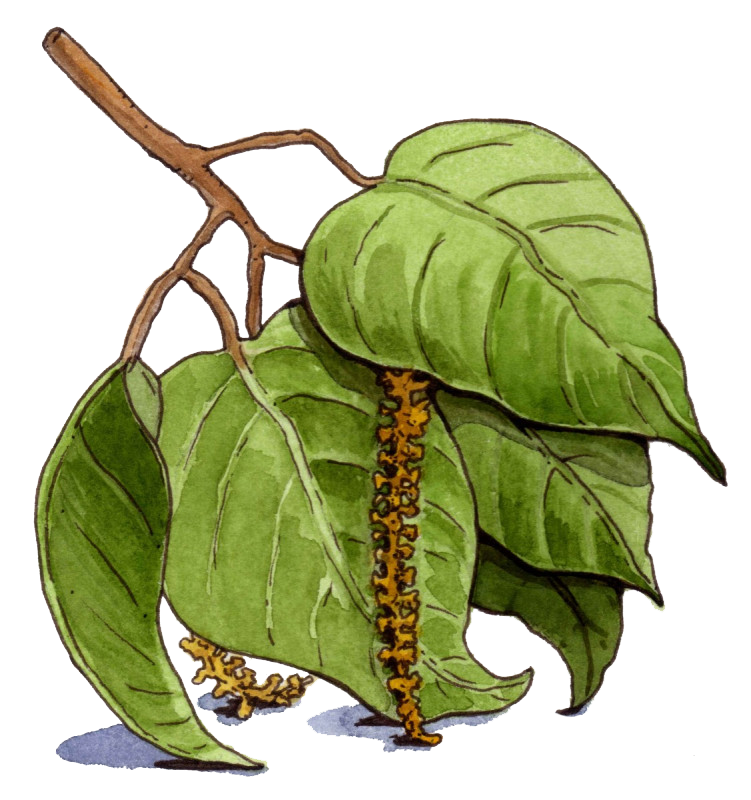
Common Names
- Sangre de Drago
- Dragon's Blood
- Sangre de Grado
- Sangre de Dragón
- SP-303
- Crofelemer
For Patients & Caregivers
Tell your healthcare providers about any dietary supplements you’re taking, such as herbs, vitamins, minerals, and natural or home remedies. This will help them manage your care and keep you safe.
What is it?
Croton lechleri has not been shown to treat cancer in humans.
The dark red sap of C. lechleri, a tree found in many regions of South America, has been used in traditional medicine for wound healing and gastric ulcers. SP-303, a mixture of proanthocyanidin oligomers derived from the plant, was found effective in the treatment of traveler's diarrhea and diarrhea experienced by AIDS patients. Now known as crofelemer, it is has been approved by the FDA to treat AIDS-associated diarrhea.
Studies done in animals showed that C.lechleri reduced the size of gastric ulcers and also decreased the time required for wound healing, but human data are lacking. Laboratory studies indicate that it can kill cancer cells, but no studies have been done in humans.
What are the potential uses and benefits?
- To treat diarrhea
Clinical trials have shown that C. lechleri is effective for traveler's diarrhea and diarrhea experienced by AIDS patients. - To treat cancer
Lab studies suggest that C. lechleri can kill cancer cells, but human data are lacking. - To treat viral infections
One clinical trial found that topical C. lechleri was no more effective than placebo for recurrent genital herpes lesions in AIDS patients. - To treat gastric ulcers
Animal studies suggest that C. lechleri may reduce the size of gastric ulcers, but studies have not been conducted in humans. - For wound healing
There are no studies in humans that support this use, but animal studies suggest C. lechleri can decrease the time required for wound healing.
What else do I need to know?
Do Not Take if:
You are taking dacomitinib: Animal studies suggest crofelemer may worsen dacomitinib-induced diarrhea. Clinical relevance is not yet known.
For Healthcare Professionals
Scientific Name
Clinical Summary
Croton lechleri is a tree that is found in many regions of South America (1). Its dark red viscous latex, also known as Sangre de Grado or Dragon’s blood, has been used in traditional medicine for diarrhea and wound healing. In vitro and animal studies suggest it can promote the healing of gastric ulcers (8) and inhibit cutaneous neurogenic inflammation (15).
A mixture of proanthocyanidin oligomers isolated from the latex of C. lechleri has shown benefits for the treatment of travelers’ diarrhea (2) and diarrhea experienced by AIDS patients (3) (18). Named crofelemer, it has been approved by the FDA as a prescription drug to relieve diarrhea associated with antiretroviral therapy in AIDS patients (17). Supplementary analysis suggests it may also help reduce abdominal pain in women with irritable bowel syndrome with diarrhea (22). A clinical trial is underway to determine feasibility and tolerability of crofelemer for preventing diarrhea in breast cancer patients receiving trastuzumab, pertuzumab, and docetaxel or paclitaxel (THP), or trastuzumab, pertuzumab, docetaxel, and carboplatin (TCHP) (19).
In other studies, crofelemer was reported to be no more effective than placebo in AIDS patients with recurrent genital herpes (14), while topical use of a cream containing C. lechleri resin and pomegranate seed oil was found useful in preventing and improving skin changes associated with dermal scarring (20).
C. lechleri demonstrated apoptotic effects in cancer cells (4). However, it also increased the viability of leukemic cells (5). Further research is needed to determine the anticancer potential.
Purported Uses and Benefits
- Diarrhea
- Cancer
- Antiviral
- Ulcers
- Wound repair
Mechanism of Action
SP-303, a mixture of proanthocyanidin oligomers, inhibited cAMP-mediated chloride secretion in two intestinal epithelial cell lines (6) (7). The dual inhibitory action of crofelemer, a purified proanthocyanidin oligomer, on two structurally unrelated prosecretory intestinal Cl(-) channels may account for the intestinal antisecretory activity (16). The sap of C. lechleri also decreased capsaicin mediated chloride secretion (8) by inhibiting activation of sensory afferent nerves. In another study, it irreversibly altered the microtubule structure of cancer cells, preventing adhesion and inducing apoptosis (4). It also inhibited mutagenicity of 2-Aminoanthracene, although the mechanism is unknown (10). Topical application of Taspine, an alkaloid derived from C. lechleri sap, to a wound site produced an increase in wound healing activity (11) and an increase in the wound tensile strength 5-7 days following injury (12). Taspine promotes wound healing via increased migration of fibroblasts to the wound site (11) by acting as a chemotactic factor for fibroblasts (12).
Contraindications
- Dacomitinib: Animal studies suggest crofelemer may worsen dacomitinib-induced diarrhea, although clinical relevance is not known (21).